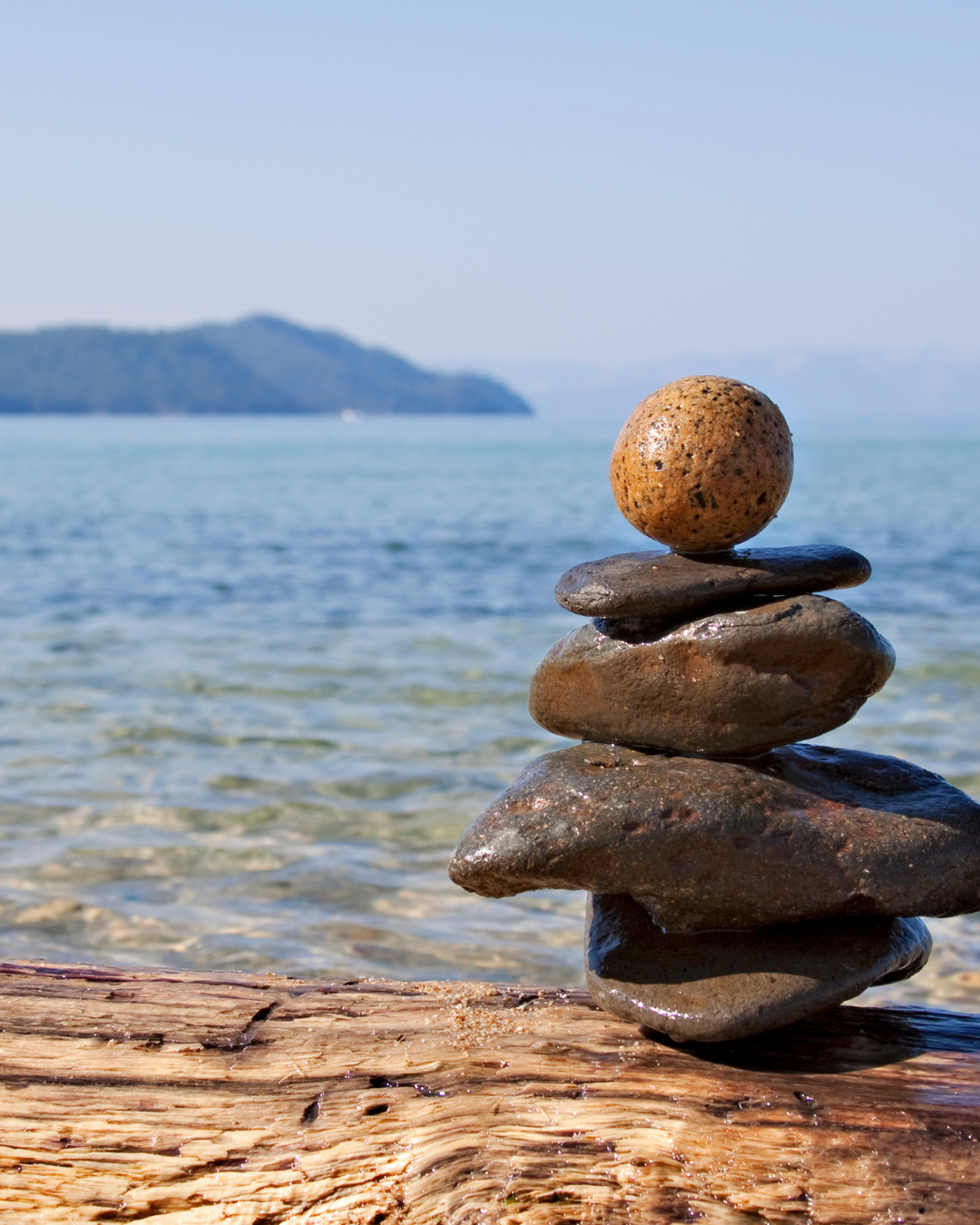The body thrives on movement
The mind rests in stillness
The heart is nourished by beauty
And the soul flourishes in freedom.
There is a lot of talk these days about the need to get into alignment, to find harmony, to establish balance in our lives. Let’s have a look at this very important issue and see if we can get some clarity on how to achieve such harmony and balance.
Fortunately, there is a very simple way of establishing harmony and alignment in our lives. We’ll get to that. First, let’s look at what the ancient wisdom of Sanskrit has to say, and then we’ll fill out our understanding of how to move forward.
The Sanskrit word for ‘balance’ is santulana (सन्तुलन). It means ‘equilibrium, balance’, or literally “to weigh one thing against another”.
This shows us that the key to achieving balance is the weighing of things against each other, weighing our options and making appropriate, reasonable choices.
Before we can make reasonable choices in our lives – where to live, who to befriend, what to study, where to work, what to do with our leisure time – we need to focus on a more fundamental area of balance. That is to balance ourselves. We need to ensure we are integrated and harmonious within ourselves, before balancing our interactions with other people and events.
So let’s start the process by taking a look at ourselves. The simplest way to do this is to see ourselves as made up of four parts: body, mind, heart, and spirit. We have a physical body, mental faculties, an emotional centre, and a quiet witnessing consciousness that we can call the ‘Self’.
If we focus first on our physical body and examine how we should treat it, nourish it, and care for it, we can then extrapolate to the other three centres – mind, heart, and spirit.
There is so much really good information about how we should look after our bodies. The ideal is to have a body which is strong, healthy, fit, active, flexible and energetic. On the other hand, we would all like to avoid a physical body which is unhealthy, weak, constantly fatigued, tense and stressed. How do we achieve the one, and avoid the other?
We can take a simple matrix of food, exercise and rest.
First is the food we give our bodies; second is the exercise and activities that our bodies engage in; and third is the rest and relaxation we ensure our body gets in order to recharge.
Appropriate, healthful food, rest and exercise for the body are, again well-researched and well-documented including variations that take into account various body types, metabolisms and life-styles.
A nourishing diet that includes the full range of nutrients, at the right time and in appropriate quantities, is what we need to keep our body healthy.
At the same time the body needs to move and do exercise. This will maintain fitness, muscle-strength, agility and preparedness.
Finally, the body cannot simply go and go and go without the right amount of rest at the right time and for the right duration.
Care for the body in this way, with appropriate food, exercise and rest, will ensure a strong, healthy energetic physical body.
This framework can now be applied to the mind, the heart and the spirit.
Let’s take things in order and start with the mind. What does a healthy, efficient, well-nourished mind look like? How does it work and behave? There is, again, much that could be said here, but let’s agree that such a mind would be clear, quiet, creative, perceptive, intelligent, reasonable and productive. The mind’s talent is to process information and draw reasonable conclusions, to formulate ideas, theories and to solve problems. There is imagination, creativity and spontaneity here as well.
A mind that has not been nourished and well-used will display unhealthy characteristics. It will be dull, easily distracted, noisy, repetitive, subject to obsessions, wild enthusiasms and ideas based on false information. In a way it will be our master, making us dance to its tune, rather than a helpful servant which we apply to issues and problems in our lives.
To achieve mental efficiency and health, we need to look at the food, exercise and rest that is appropriate for the mind.
Put simply, food for the mind is clear, accurate, factual information, stimulating and interesting knowledge. Simple principles of eternal wisdom learnt by heart are essential nourishment for the mind. For example, ‘love thy neighbour’; ‘to thine own self be true’; ‘honesty is the best policy’. These principles, inculcated while young, or studiously adopted later in life, form a framework for living our lives.
Exercise for the mind comes in a variety of forms, but the basic principle is ‘use it, or lose it’. Once the food has been taken in – the facts, knowledge and wisdom – they must be applied, to solve problems, think creatively, extrapolate from the known facts to future plans and projects. In a school setting, the children first learn counting, times tables and principles of addition and subtraction. Then they can build to multiplication and division, and then move to problem solving – “if a train leaves station A and travels at 60 miles per hour…” and so on.
Later in life study is still helpful. Taking up a musical instrument, a foreign language or adult education in a whole range of areas is exercise for the mind.
Life itself presents many opportunities for mental exercise. Principles such as courtesy and respect for others, living honestly, and following through on promises, lead to successful problem solving in relationships, with our families, and at work.
Mental exercise usually involves some effort and focus. One important tip here is, if it’s easy and comfortable, then you might not, in fact, be exercising the mind.
Rest for the mind, on the other hand, should be easy and relaxed. Different people will find different things that give the mind a welcome period of rest. For some, for example, reading history is relaxing and pleasurable. For others it is hard work and requires mental effort. There should be some level of engagement and involvement even in the periods of mental rest. Mere vegging out in front of the TV is not what we are talking about.
With due care to suitable food, exercise and rest for the mind we will find our mental faculties are clear, perceptive, creative and sharp.
A healthy heart is open, warm, compassionate, engaged, resilient, strong and steady. I could go on and on. A heart which is out of balance is fearful, angry, petulant, selfish, and self-absorbed, subject to a shifting array of negative emotion – jealousy, depression, lust, greed, nastiness.
To feed the heart and build up positive emotions, we need beauty, wonder, awe and love. Companionship with magnificent creative works of art, music, literature, and connection to the wonders of natural beauty, are all tremendously nourishing.
Exercise for the heart means engaging with such healing emotions as forgiveness, compassion, dedication and resolution. Some of these can be challenging, but all strengthen our emotional centre.
Rest for the heart is a bit personal. Listening to beautiful music, visiting a local art gallery, taking a walk in nature. Many of these pursuits are both nourishing and restful for the heart. You will find this with many things we do. They do multiple jobs of feeding and resting.
By giving our heart the right food, exercise and rest we develop inner emotional strength and resilience, and find ourselves connected to those around us.
When we get to the level of spirit, we see the movement between food, exercise and rest can be even more fluid.
Take meditation for example.
From my own experience meditation, the practice of listening to a mantra and allowing it to take me to a place of deep peace and stillness, can be nourishing, giving me energy and focus for anything that follows.
It can be profoundly restful, where cares and concerns drop away. A friend of mine described it like deep sleep while you’re still awake.
It can also be work, when the chattering mind and restless imagination present a stream of distractions that require gentle but persistent effort to return my attention to the mantra.
There are a lot of other spiritual practices. These include mindful attention to what you are doing, prayer, deep breathing, study of works of wisdom. These can fall into any or all of the categories of food, exercise and rest for the spirit.
The most important take-away from all of this, is that we are not just a physical body. We have a mind, a heart, and a conscious centre that need the same care and attention as our physical body.
We all know what happens if we eat badly, exercise too much or too little, and don’t have the right amount of rest. Our bodies will struggle, and if this persists, disease, exhaustion, or collapse are not far away.
If we are similarly neglectful of the needs of our mind, our heart, and our spirit, then similar problems and breakdown of basic functions of these areas will ensue. What that might look like can be the topic of another blog piece.
For the moment, I’d encourage you to take an honest look, and take practical steps to restore the balance in your life. Food, rest and exercise for your body, your mind, your heart and your spirit. Make one simple change in one area of your life. This can begin to re-establish santulana – balance. You will feel the benefit and experience an expansion and equilibrium on all levels.

